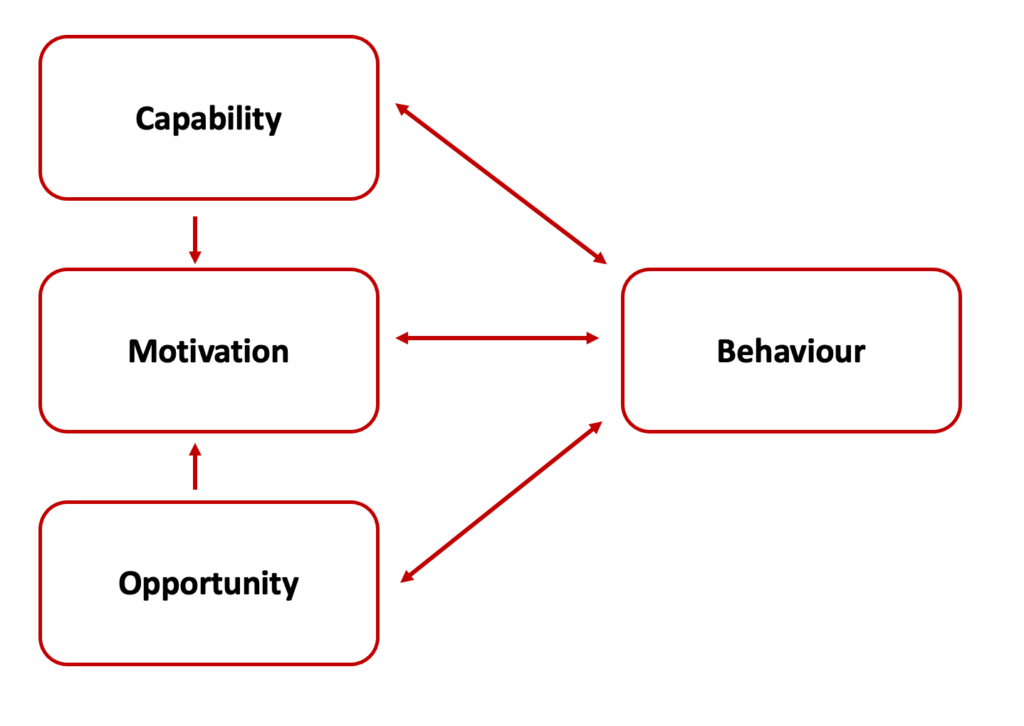Each faculty coverage ought to be seen by the eyes of a lately certified instructor on a full timetable, with a difficult class or lessons.
If you start with this assumption, it instantly makes you take into account the issue degree of embedding any shiny improvements, modified curricula, or new educating strategies. Even a seemingly minor new educating technique should be built-in into a posh array of present habits, lessons, timetabling, and classroom peculiarities.
Then we take into account literacy. Its scale and scope are close to limitless: studying, writing, discuss routines, spelling, grammar, enhancing, textual content selections, textual content selections, curriculum planning, and pupils’ literacy limitations and many others. The record goes on.
With these challenges attending creating educating strategies and instructor habits, it is sensible for literacy leaders to rigorously about implementing a small variety of significant however manageable literacy developments.
COM-B – A useful mannequin to think about instructor behaviour change
It’s useful to attempt to distil down a possible literacy problem/improvement, equivalent to ‘enhance the studying of informational texts and curriculum entry’.
First, what particular instructor behaviours are we wish to help? For example, it could be we would like academics to appraise the issue degree of all informational texts they’re utilizing. Along with that, it could be we’re after academics pre-teaching ‘keystone vocabulary’, or planning retrieval quizzes on the premise of chosen difficult informational texts.
We then might take into account what energetic pupil behaviours we’re meaning to help, in order that pupils learn informational texts extra efficiently. It might be that we educate them older pupils particular note-taking methods, equivalent to Cornell Word-making, to assist them chunk down, navigate and document difficult informational texts.
After getting refined the specifics you may then use the COM-B mannequin to replicate additional on the behaviour change we’re after. The COM-B behaviour mannequin, is a part of a ‘behaviour change wheel’ devised by Susan Michie and colleagues. On the coronary heart of the method is a helpful consideration of the drivers of human behaviour – academics or in any other case:

You may apply the mannequin to the related literacy method you wish to help:
Functionality: This describes each the bodily and psychological functionality to undertake a behaviour. For example, do academics have the vitality and stamina, together with the deep data and expertise to replan classes and focus in on altering the studying method to difficult informational texts. Relating to informational texts, there may be probably a topic data problem to collate a spread of apt texts and to have the ability to break them down and scaffold them appropriately.
Alternative: This describes each the bodily alternatives (time for SOL planning and bodily sources – equivalent to new textbooks) and social alternatives (do my division or section group colleagues need to make related modifications and need to collaborate?). Maybe the chief actuality right here is giving over the time to make a change and having a group of colleagues working with you. With out these helps, alternatives are at all times restricted. Keep in mind the busy RQT on a full timetable?
Motivation: This describes a reflective motivation (whereat academics plan and replicate upon their work, thereby influencing our attitudes and behaviours), together with our computerized motivations (such because the habits that drive our day by day observe). In fact, when you’ve got each ‘functionality’ and ‘alternative’, then motivation is extra probably. With informational texts, our curriculum planning might steer our educating approaches, together with our recurring approaches to efficiently scaffolding tough texts in our topic or section. In reality, academics simply might not recognise there is a matter, and so are simply not motivated to alter.
COM-B and Literacy Priorities
Utilizing this mannequin to replicate on any proposed literacy priorities can show helpful. For instance, if there are challenges with regard to instructor data or method, then CPD is the answer. And but, if motivation is low, or there may be too little time or alternative, then CPD is prone to show needed however inadequate.
You may attempt it rapidly. You need to enhance the educating of the enhancing course of for pupils’ writing in any respect key phases throughout a variety of academics and TAs? Properly, what instructor downside is that this fixing (motivation)? How a lot topic data and confidence do academics have in explicitly educating sentence variation or spelling patterns (functionality)? The place within the faculty day are these approaches being embedded and the way do academics discover the time to present significant suggestions to pupils (alternative)?
Now, take into account the method to behaviours that drive improved spelling, enhancing, and writing accuracy from a pupil perspective. Functionality, alternative and motivation nonetheless apply.
We might come to new reflections as literacy leaders. A CPD session, or perhaps a sequence of coaching, is unlikely to show a silver bullet.
Not solely that – it will not be that academics are immune to adjusting their literacy practices in any respect – it could simply show that they aren’t wholly clear what particular behaviour modifications are literally needed within the classroom. For example, academics might perceive an intention to learn extra prolonged texts, however they aren’t clear when or how finest to enact prolonged studying inside the restricted scope of present curriculum time.
Let’s take into account each literacy improvement, certainly all faculty enchancment plans, by the lens of that harried, enthusiastic RQT going through a stacked timetable. COM-B might assist to higher help and steer profitable change. If we’re main literacy, in no matter function, let’s guarantee we seize each alternative to affect and help academics to make profitable modifications.

